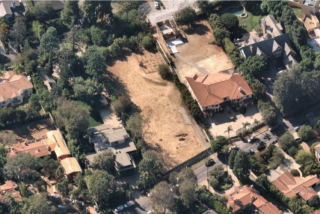Money Does Grow on Trees
Out on a gravel road on the very edge of the Southern California megalopolis, I am sitting in the sunshine on a stack of freshly sawed boards with Mike Easterling.
I’m here in Irvine because two things are occurring simultaneously in U.S. cities. One of them is lousy, the other heartening.
Both are happening in front of our eyes, although they are not easy to discern.
I am referring to our essential regard for nature. Plus scary topics such as global warming, our brimming landfills, the loss of our rain forests, polluted water and rising energy demands. I am also thinking about our love of wood--in this case, prime softwoods and exotic hardwoods from the far corners of the world, the stuff to make floors and guitars and conference tables and paneled living rooms and patio furniture and salad bowls and 1,000 other fine things.
Our topic is trees.
The cedar boards on which Easterling and I are sitting are part of a revolution. His San Marcos-based company, East-West Urban Forest Products, sells lumber salvaged from our frontyards, from roadway medians and city parks, trees uprooted by storms, trees that have reached the end of their lives, trees taken down to make way for development.
For the last 15 years or so, a few farsighted people have begun to conceive of urban landscapes in a new way. They saw the forest in the trees. Now the idea is catching on, and it’s about time. Scandalous waste is being transformed into entrepreneurial gain for the well-being of us all, and just in the nick of time.
The problem: Of the 50 million tons of solid waste produced in California, 16% is so-called green waste from vegetation and 4% is wood. Municipal officials regard the wood/tree component as a drain on their civic budgets--all that tree trimming, storm cleanup and stump pulling that ends up in landfills. Under state mandate to reduce solid waste, city officials are increasingly turning away from replanting big trees in favor of smaller ones and shrubs.
Incrementally, day by day, these decisions promise unpleasant consequences for city dwellers.
Big trees provide shade, which saves energy by cooling homes naturally (up to 20 degrees). They capture rainfall that otherwise courses over dirty streets and creates toxic storm-runoff problems. They scrub the air clean, dampen noise, beautify our neighborhoods and renew our connection to the cycles of nature.
Eliminating big trees in favor of scrawny ones is presumed to be cheaper in the short run but costly in so many other ways.
Easterling, with a background in furniture-making, is in the retail end of a movement out to prove that city trees can be managed as forests. They can pay for themselves and for the good of the environment, here and afar. “Our mission is to put the lumber from our urban forests to higher use,” he says. “Every time someone buys urban wood, that’s one less tree that has to come down in the rain forest.”
He opens a gleaming wooden case. Inside are 36 rectangular samples, like tiles, of the most common commercial woods produced locally. California has the advantage of a favorable growing season and a long tradition of planting exotic trees in the cities, from gum to carob, from carrotwood to black acacia. These woods have the added cachet of sentimentality, as any woodworker could tell you. Each tree ring, each fancy twirl of figuring is part of our shared history, whether it ends up as an architectural accent in a home or a night stand in the bedroom.
Prime hardwood fetches premium prices at specialty lumber yards. A board foot--1-inch thick by 12 inches square--of silk oak imported from Australia could cost $7.50. That same species of tree, common to Southern California, has been ending up in landfills, or at best, as firewood.
Now, West Coast Arborists Inc., which does tree service for 100 municipalities throughout the state, is also becoming a lumber mill, using Easterling to market and sell the wood.
“We’ve been disconnected from the things that trees bring to our lives,” says Eric Oldar, an urban specialist with the California Department of Forestry. “To think of trees as potential commodities brings the idea of sustainability to our cities .... Trees are an essential part of the cultural nervous system of livable communities.”
With grants and the loan of milling and drying equipment, the state is now coaxing along half a dozen projects to bring city trees to market, and similar urban forestry endeavors are underway elsewhere, although the yield in lumber is still only a tiny fraction of its potential. The goal is more trees, more shade, more rain absorption, cleaner air, more nature in our urban environment--and as soon as city officials realize the payback potential from lumber, let’s hope we see a planting boom.
Where do you live?
I live in the forest. I live in Southern California.
More to Read
Sign up for Essential California
The most important California stories and recommendations in your inbox every morning.
You may occasionally receive promotional content from the Los Angeles Times.










